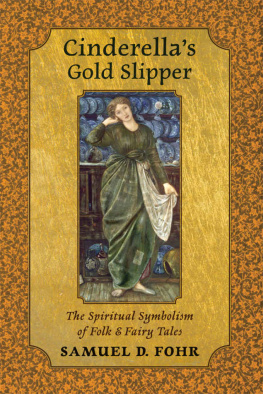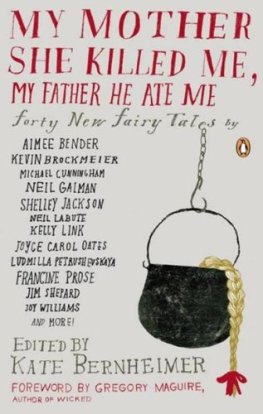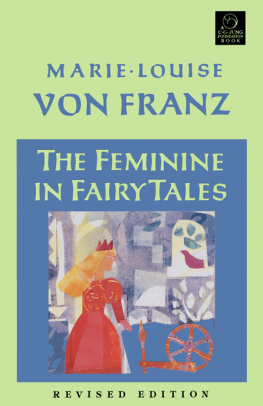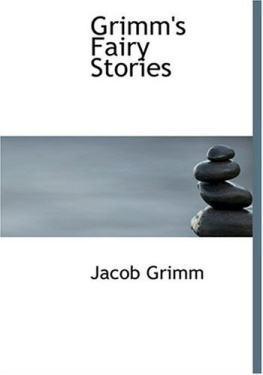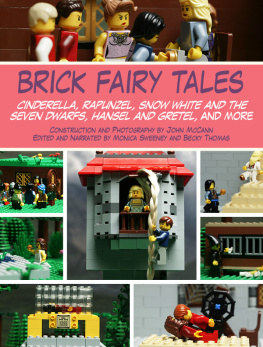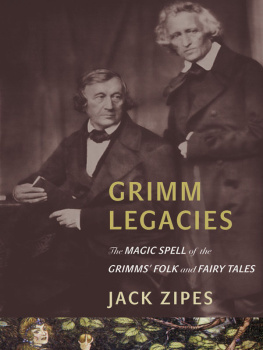Cinderellas Gold Slipper
The Spiritual Symbolism
of Folk & Fairy Tales
SAMUEL D. FOHR
Cinderellas
Gold Slipper
The Spiritual Symbolism
of Folk & Fairy Tales

Fourth, revised, retitled edition 2017
Philosophia Perennis
First edition 1991 Quest, Wheaton, IL
Samuel D. Fohr 2017
All rights reserved
No part of this book may be reproduced
or transmitted, in any form or by any
means, without permission
For information, address: Philosophia Perennis
84 Main St, Peterborough, NH 03458
978-1-62138-265-2 pb
978-1-62138-266-9 cloth
978-1-62138-267-6 ebook
Cover Image:
Edward Burne-Jones, Cinderella (watercolor, 1863)
Museum of Fine Arts, Boston
Cover Design: Michael Schrauzer
To Jenny and Henry Fohr,
the Poles of My Creation
CONTENTS
Preface
The idea of a book on the spiritual symbolism of folk and fairy tales collected by the Grimm brothers and others germinated in me for a long time. However, the impetus for writing the present work came in large part from the publication of Beggars and Prayers by Adin Steinsaltz. That excellent book contains new versions and new translations of many of the longer tales of Hasidic master Nachman of Bratslav, as well as an explanation of their spiritual symbolism along Kabbalistic lines. There is no need for new translations of the folktales associated with the Grimm brothers. These stories have been translated into English by many people, and as long as one avoids versions which have been especially watered down for children, one is on safe ground. What is badly needed is a symbolic analysis of these stories along spiritual lines. This claim may strike the prospective reader as being completely unfounded. Indeed, it may seem farfetched to compare Rabbi Nachmans tales, which were created with the express purpose of teaching spiritual truths, to the tales collected by the Grimm brothers. But this book argues for the contrary view.
There is an interesting connection between the Hasidic tradition and the Grimms tales. In Praise of The Baal Shem Tov by Dan Ben-Amos and Jerome R. Mintz, a collection of legends about the founder of the Hasidic movement, includes episodes which will remind the alert reader of both Cinderella and Bearskin from the Grimm collection. For the Baal Shem Tov spends his early adult life pretending to be a neer-do-well, and even lives apart from most people for seven years before allowing his identity to be revealed.
Unfortunately, the Grimms stories are usually called fairy tales and are presently thought to be fit only for children. But as the noted folklorist Stith Thompson wrote in rarely in such stories. And in the foreword to their book The Grimms German Folk Tales (which is the translation quoted throughout this book unless otherwise indicated) Francis Magoun and Alexander Krappe make the following comment:
Originally composed by intelligent, keen witted German peasant folk and told for mutual entertainment by grown-ups for grownups, these famous folk tales are, contrary to popular notion, not essentially for younger children, to whom, in fact, only a few are likely to appeal. (p VII )
Although I will take issue with their views of the authorship and purpose of the stories, I can only applaud the last part of their statement. Of course, folktales being intended for adults does not mean that they have a spiritual content expressed symbolically. But the main purpose of this book is to demonstrate this claim beyond the shadow of a doubt. In doing so I will be using a conceptual schema based on the writings of Ren Gunon, the outstanding interpreter of the traditional worldview in the twentieth century. Gunon himself commented on the significance of folktales, most notably in his article Tradition and the Unconscious, found in the collection Symbols of Sacred Science. I am somewhat more positive than he is about what, of a traditional nature, can be gleaned from folktales.
In order to make the book read smoothly I have not (with one exception) used footnotes. However, the sources of quotations and other information are indicated very clearly in the text, and they can easily be found using the bibliography. All of the English tales I mention except The Green Lady are found in Joseph Jacobs English Fairy Tales. The Green Lady comes from Folktales of England by Katherine Briggs and Ruth Tongue. The Russian tales I recount are from Russian Fairy Tales by Aleksandr Afanasev.
Early in the twentieth century the Finnish folklorist Antti Aarne divided up European folktales into different types based on their plots and assigned a number to each type. Later in the century the American folklorist Stith Thompson revised the listing, and the results are available in The Types of the Folktale, Second Edition, which gives a short description of each tale type and sources from different parts of Europe. A listing of the type names and numbers is found at the end of Stith Thompsons book The Folktale. This index , AT 333 is given as the number for Red Riding Hood.
It is my hope that the reader will derive a deeper understanding of folktales from exposure to the ideas in this book. Folktales are truly wonderful creations, and we can only benefit from discovering what has been packed into them.
Acknowledgments
I would like to express my appreciation to Saguna Nayak for her help in the preparation of the original manuscript, and especially to Pamela Porch who was responsible for typing many of the drafts. Without her timely help, publication of this manuscript would have been held up indefinitely.
I would also like to thank Shirley Nicholson and Brenda Rosen of Quest Books for their editorial work in preparing the final draft of the first edition. Their efforts resulted in a clearer, more error-free book. I would further like to thank James Wetmore for his efforts in preparing the present edition.
I wish to thank the publishers for permission to reprint quotations from the following books:
The Uses of Enchantment by Bruno Bettelheim, copyright 1975, 1976 by Bruno Bettelheim. Reprinted by permission of Alfred A. Knopf, Inc. and Raines & Raines, New York.
Coomaraswamy, vol. 1, edited by Roger Lipsey, copyright 1977. Reprinted by permission of Princeton University Press.
Zeus, vol. III , part 11, by Arthur Bernard Cook, copyright 1940. Reprinted by permission of Cambridge University Press.
Storytellers, Saints, and Scoundrels, by Kirin Narayan, copyright 1989. Reprinted by permission of University of Pennsylvania Press.
In the Tracks of Buddhism, by Frithjof Schuon, copyright 1968. Reprinted by permission of Harper Collins Ltd., London.
Childrens Tales
or Something More?
There is a peculiar story in the Grimm collection called The Hares Bride. A hare comes to a farmers cabbage patch day after day, each time inviting the young girl of the family to sit down on my tail and come with me to my hutch. She finally agrees to visit his home, and he announces that they will be married. But while the hare is away she constructs a straw dummy of herself, dresses it in her clothes, and leaves the hutch. The hare comes home, hits the dummy on its head, finds he has been tricked, and goes away disconsolate.
Does this sound like a childrens tale? To put the question in another way, would you as a parent read this tale to your child? Although there is something of the fantastic about it and it involves an animal which children view as cuddly, there is also something vaguely sinister about it. In fact, it bears a remarkable resemblance to the so-called Lenore story ( AT 365, not in the Grimm collection). In his book
Next page
